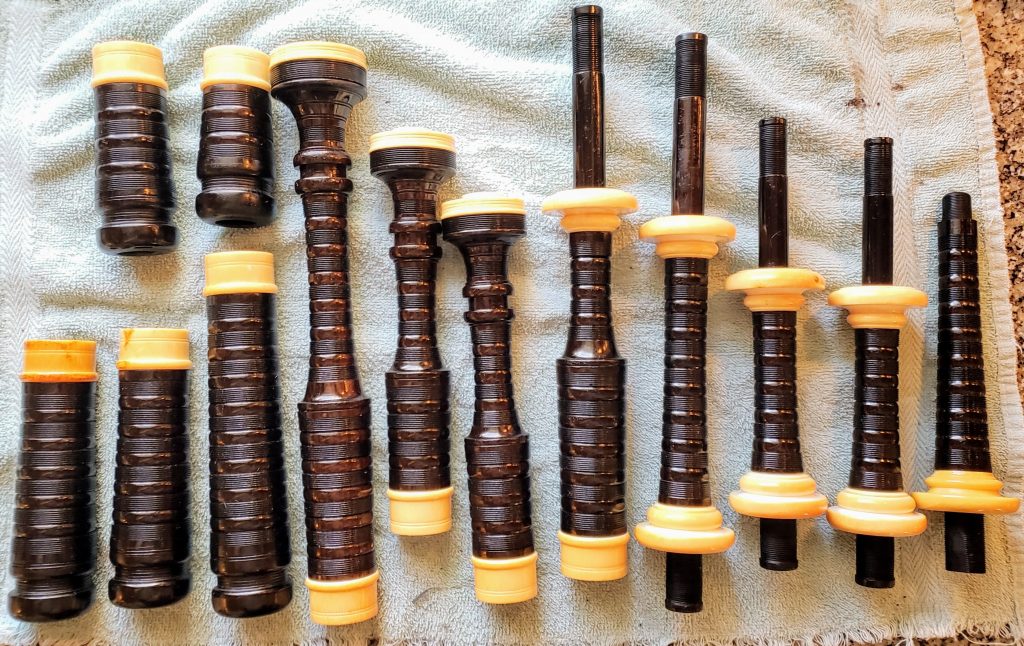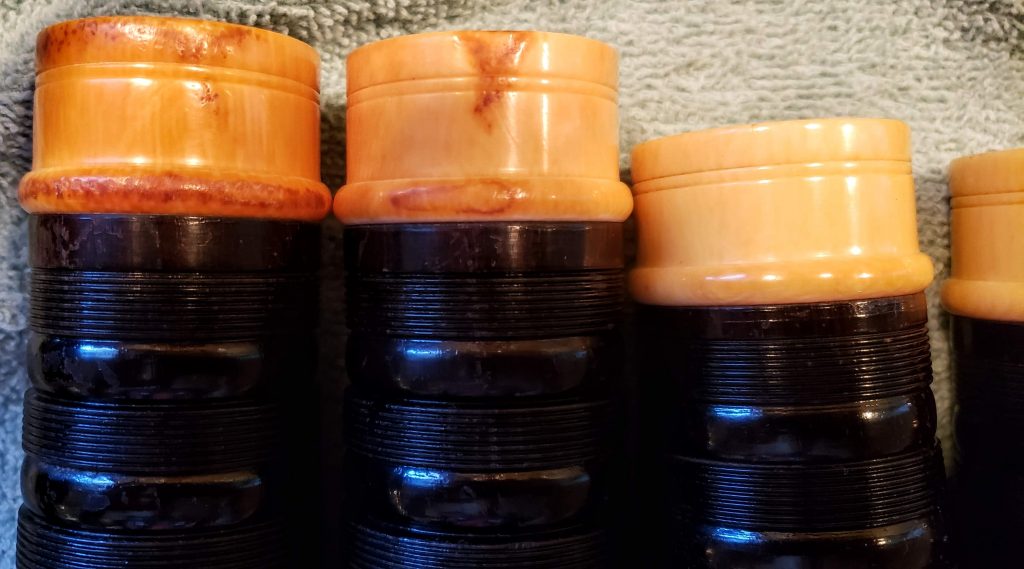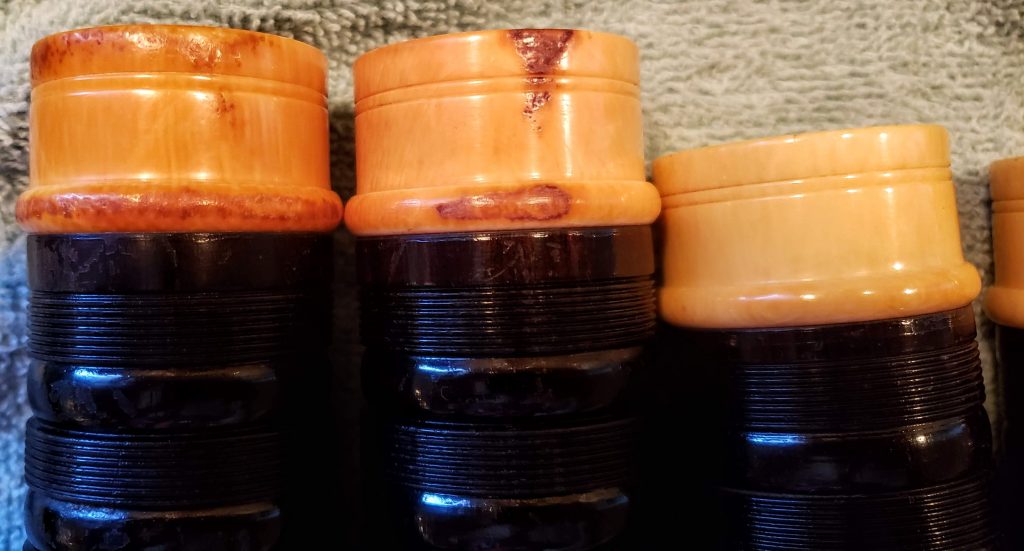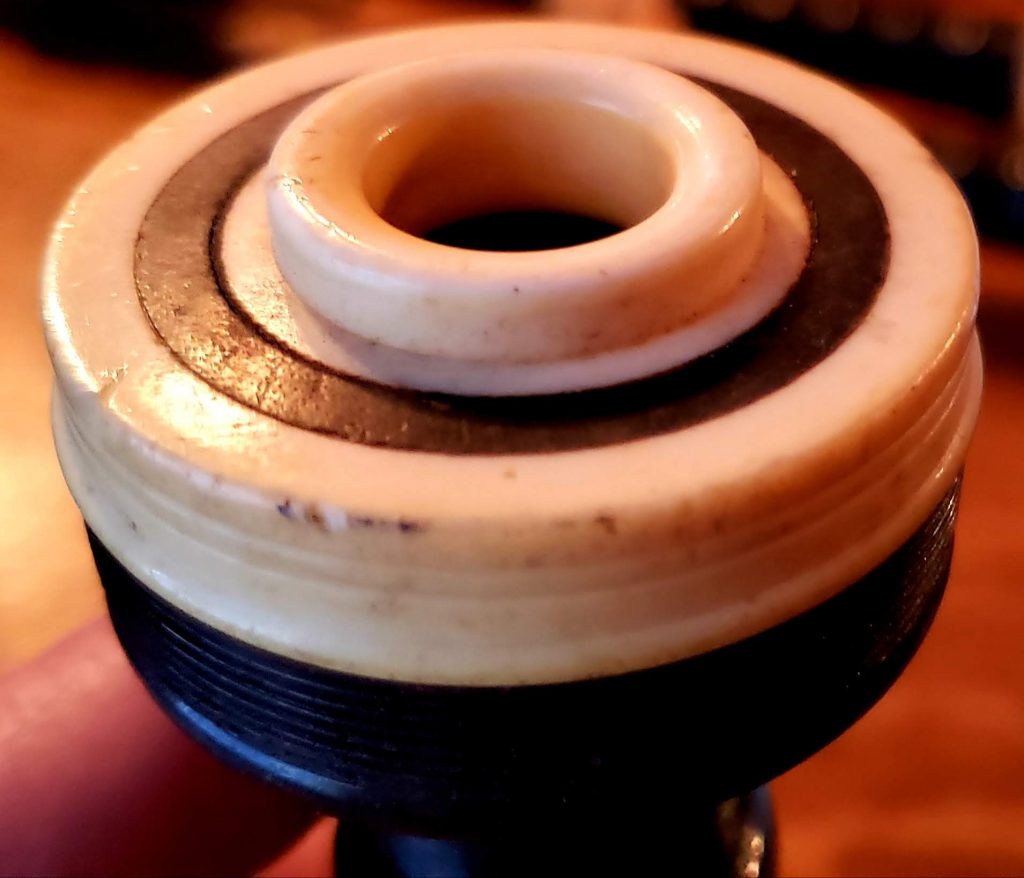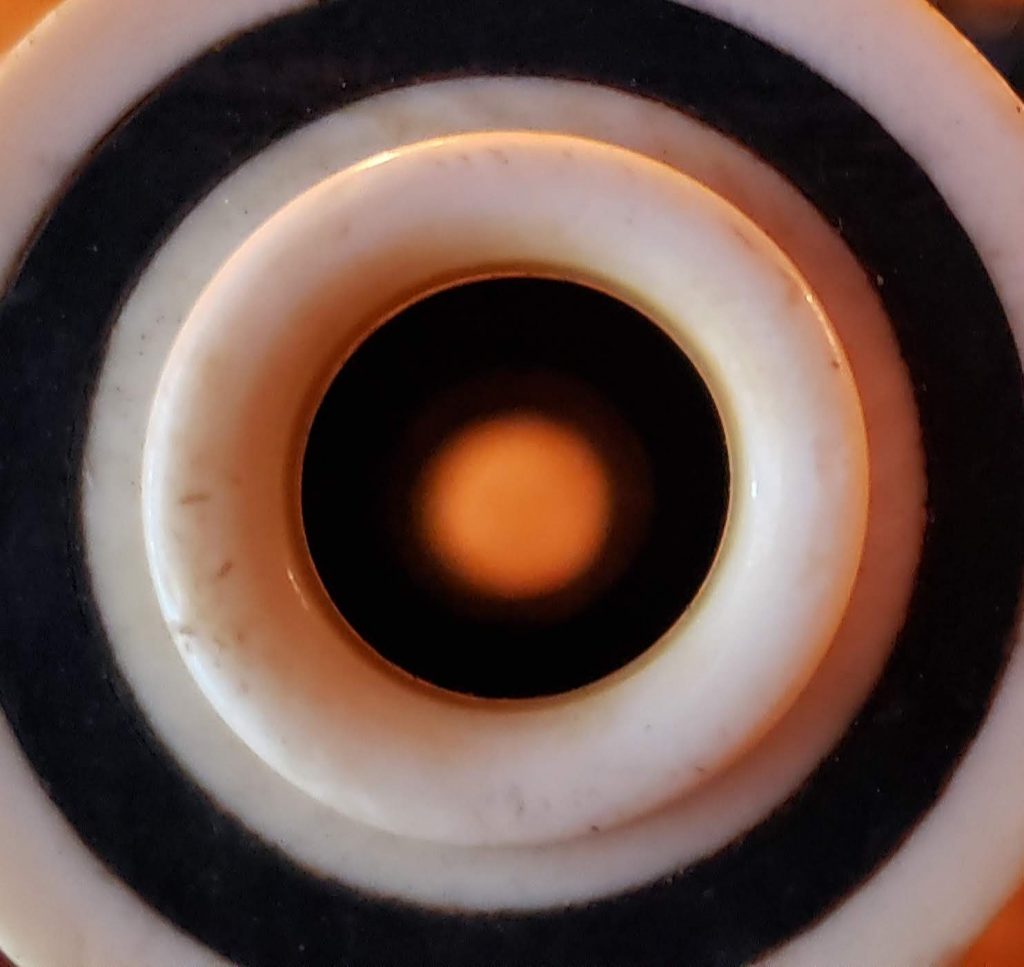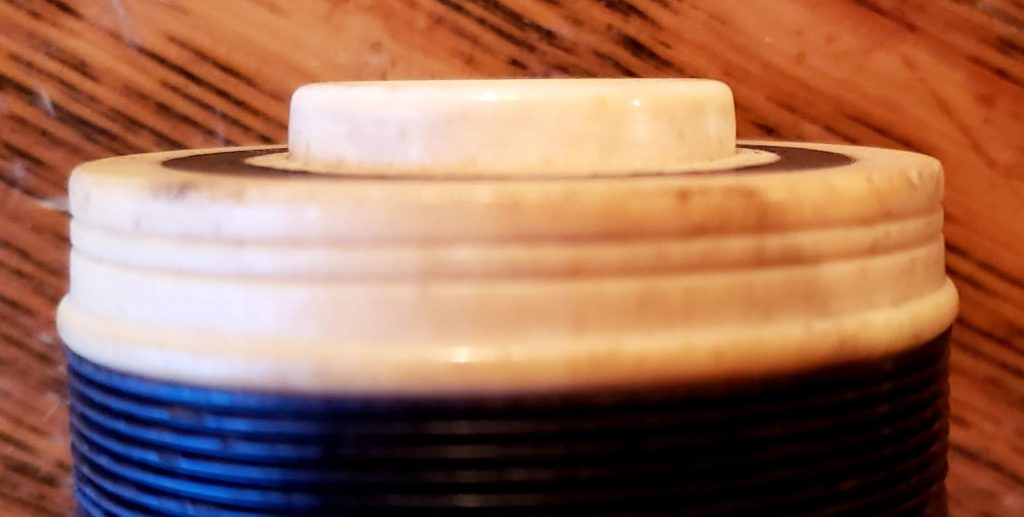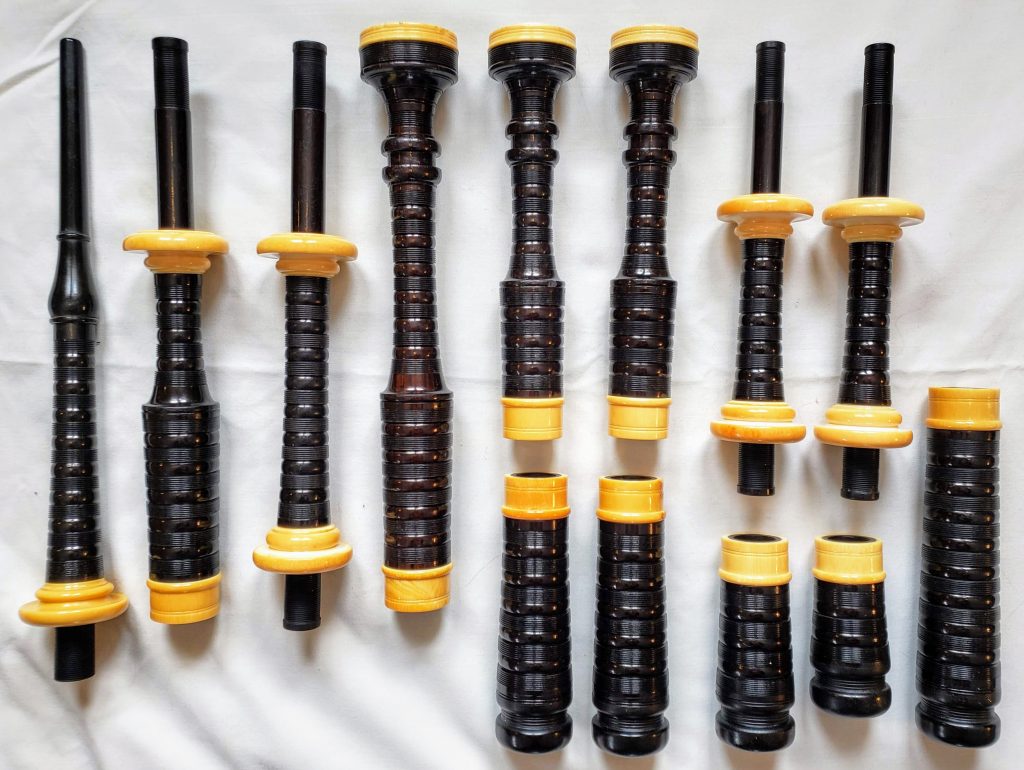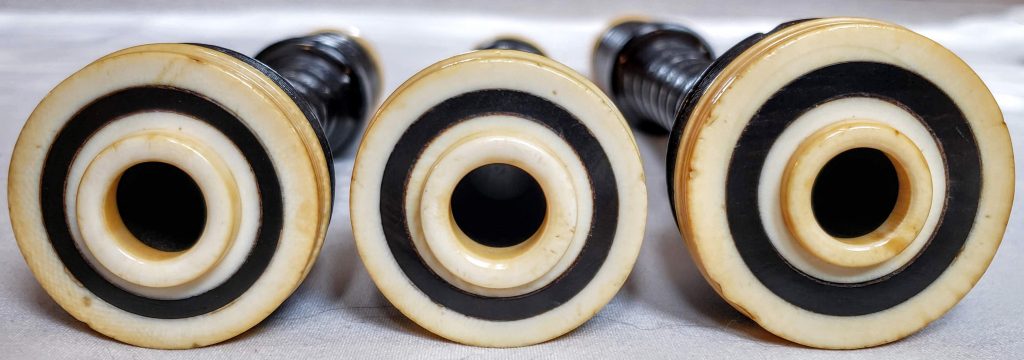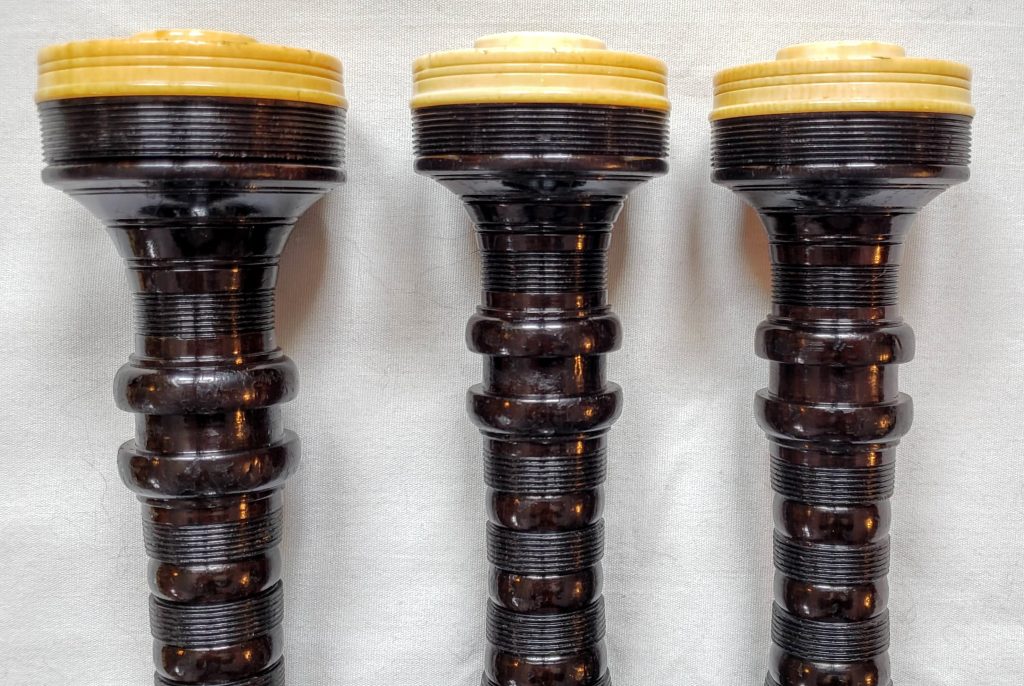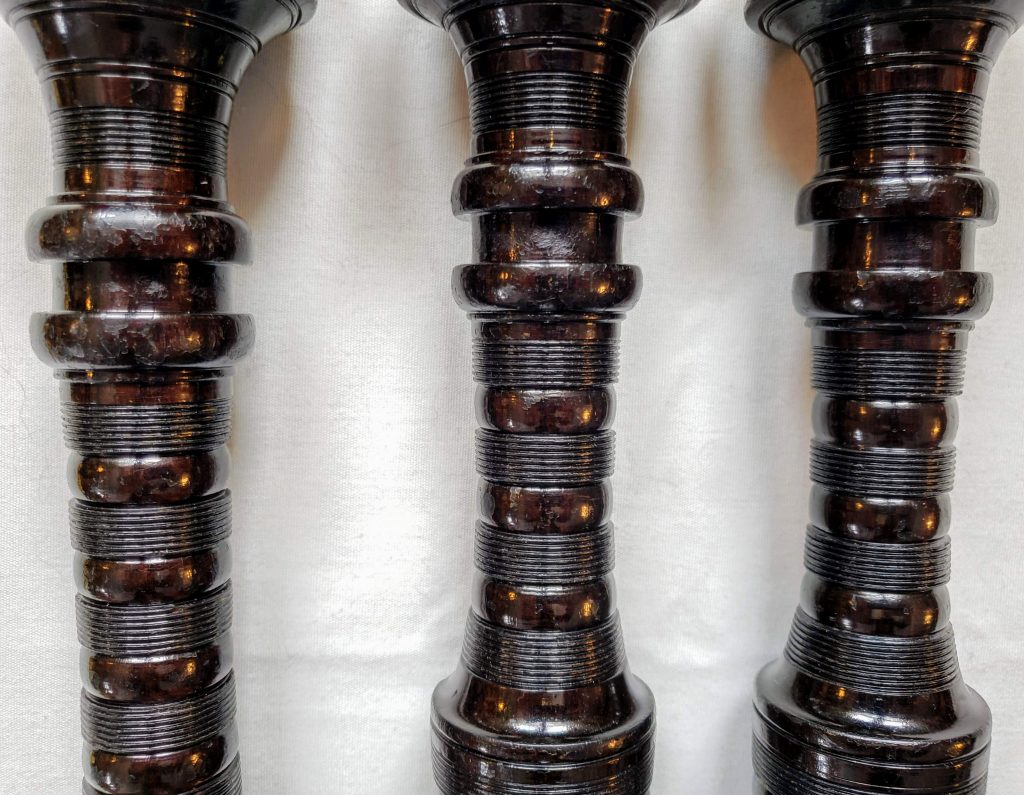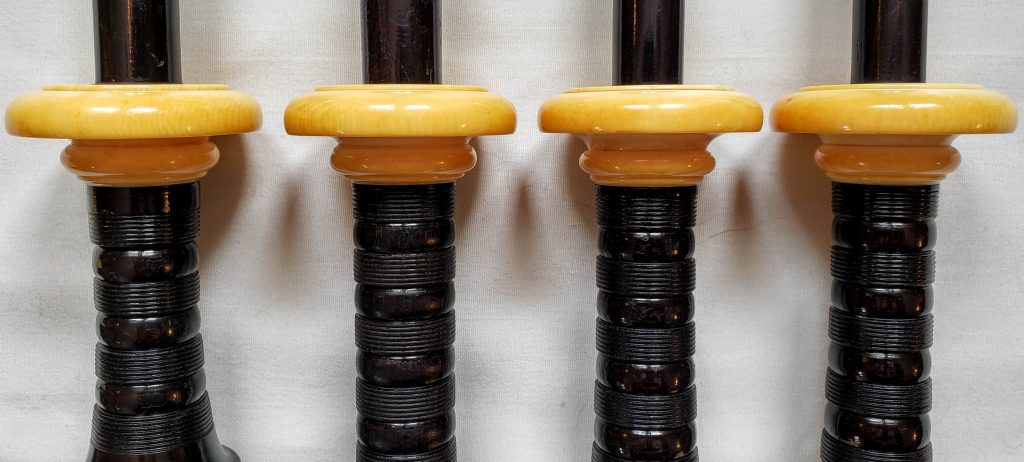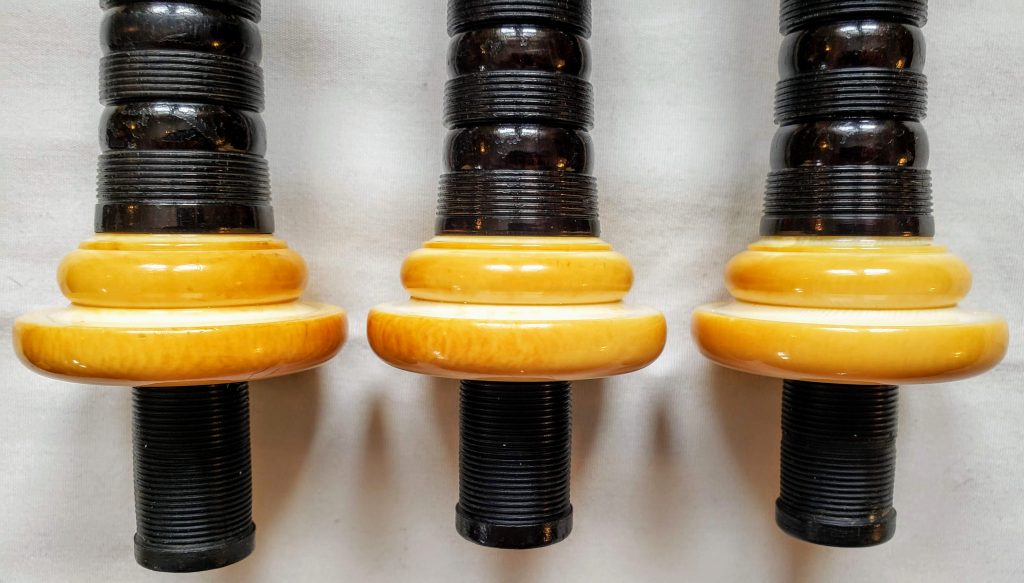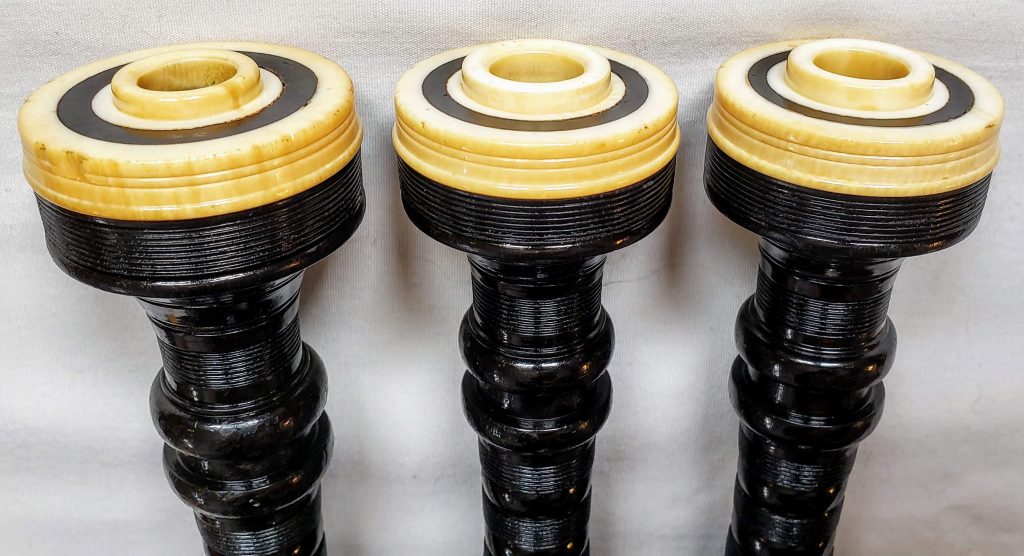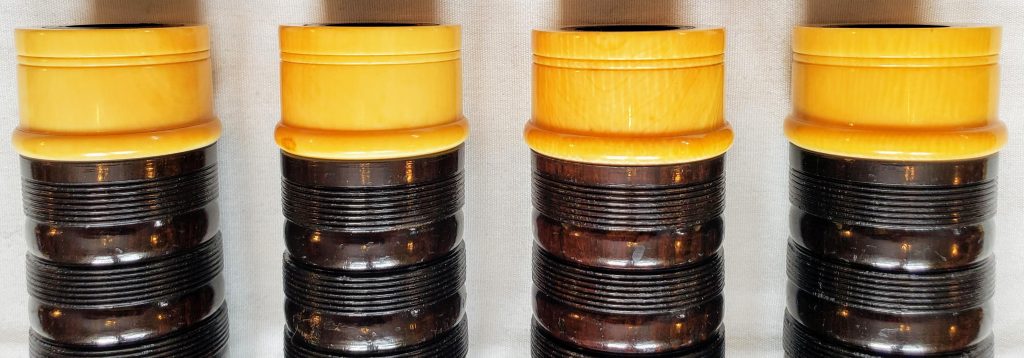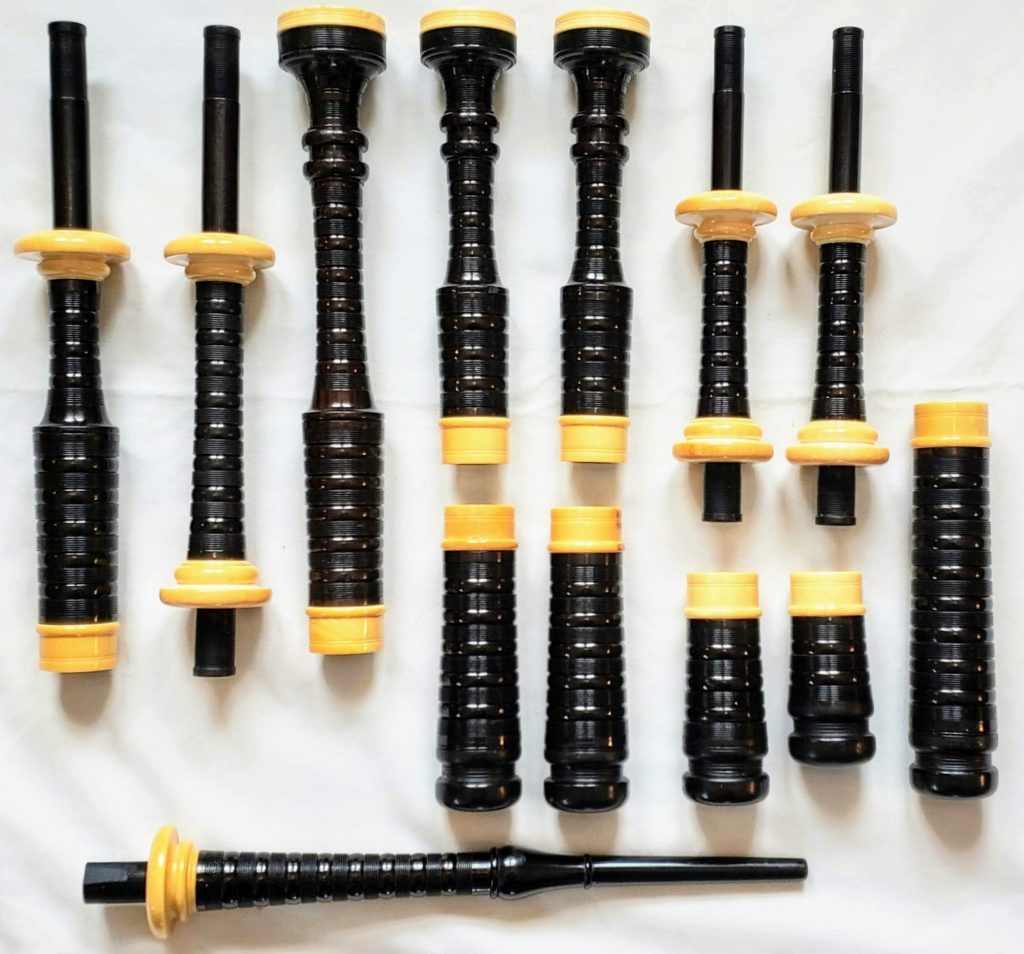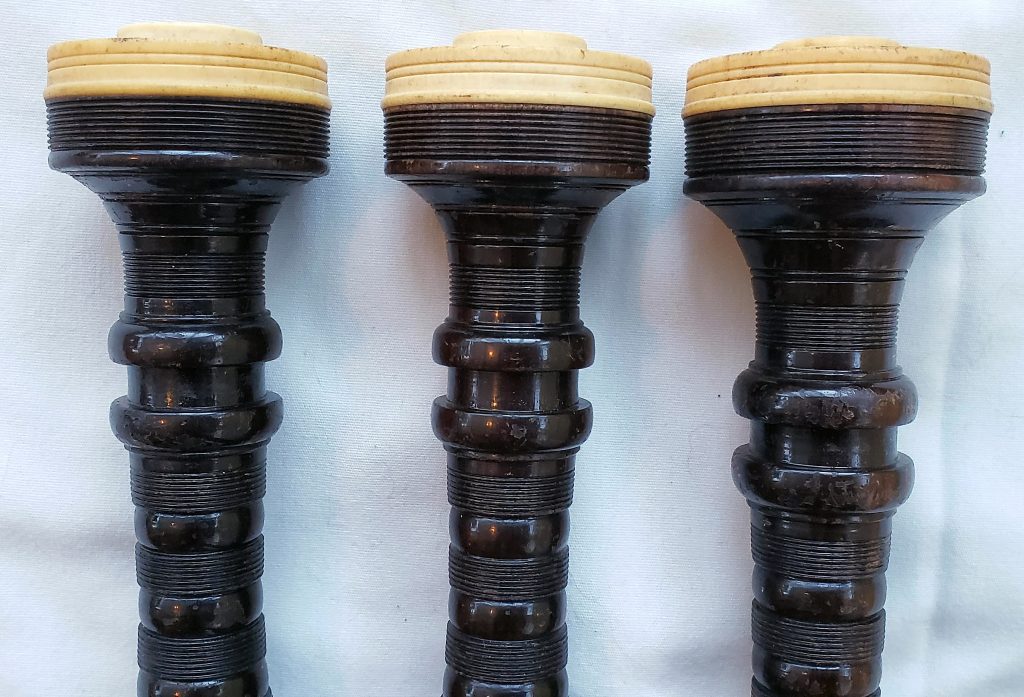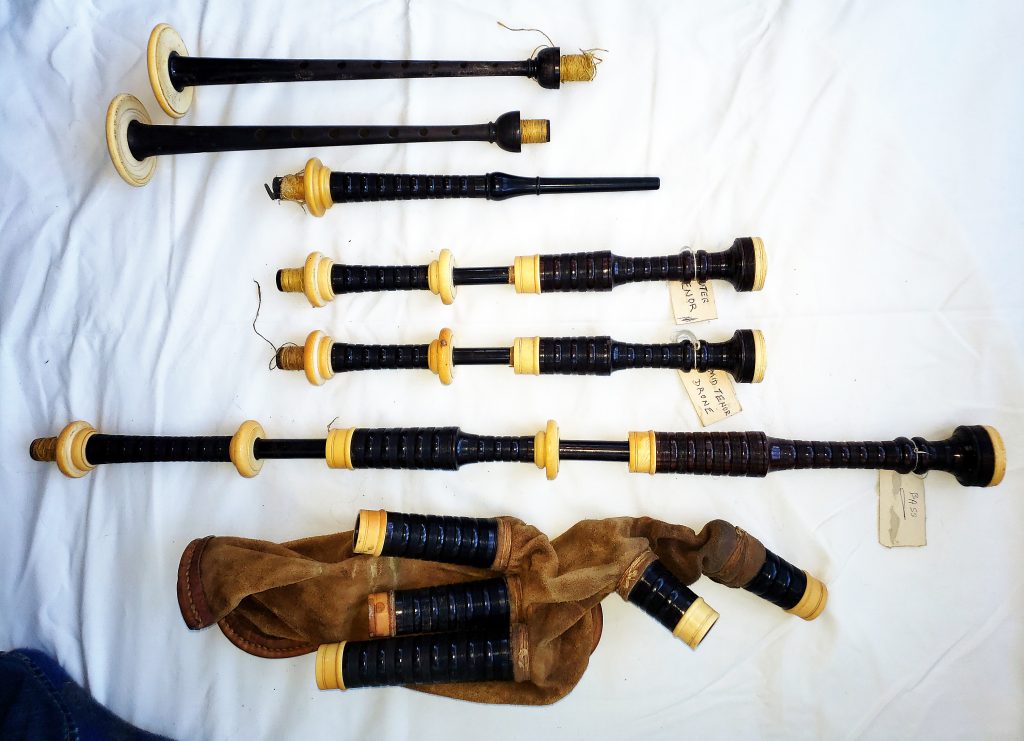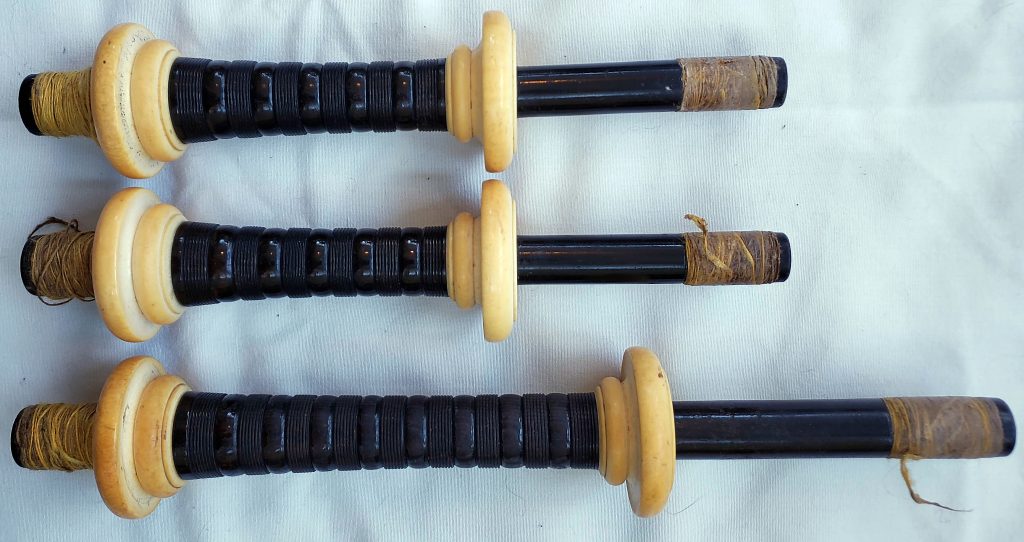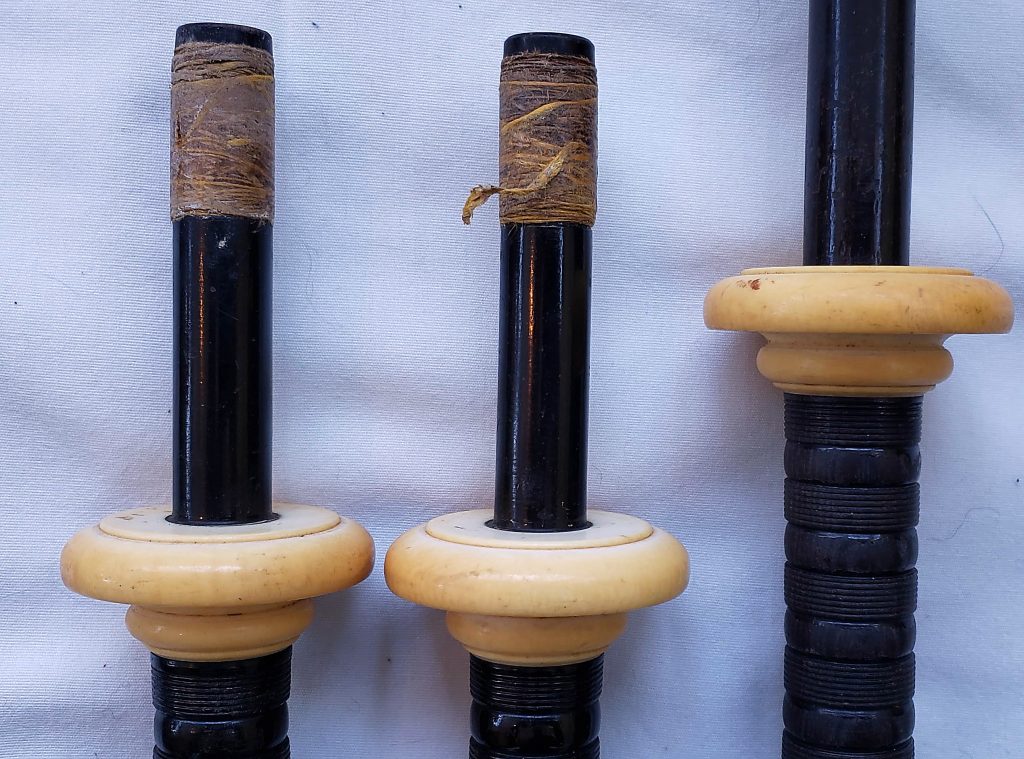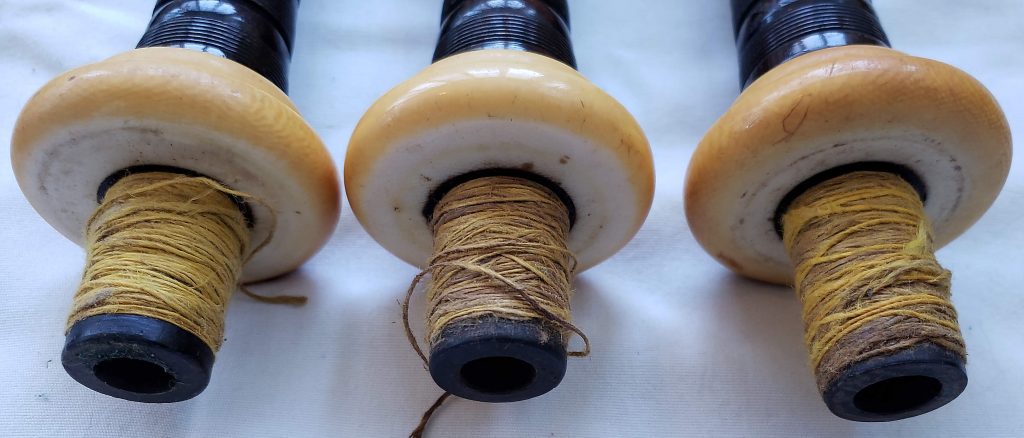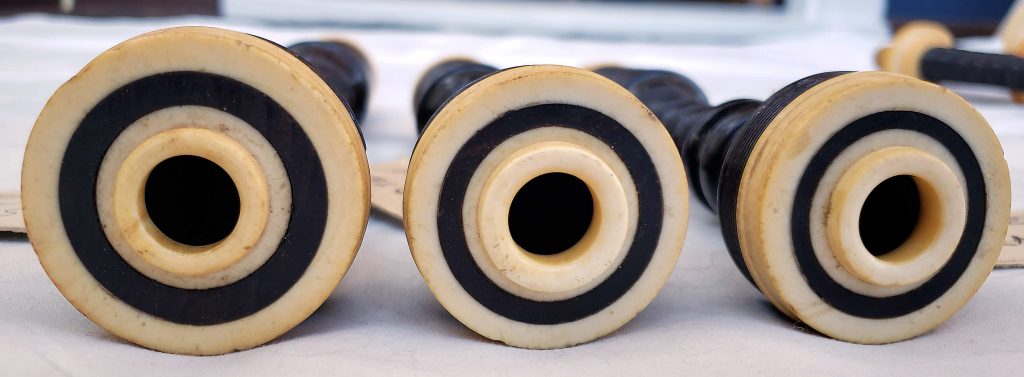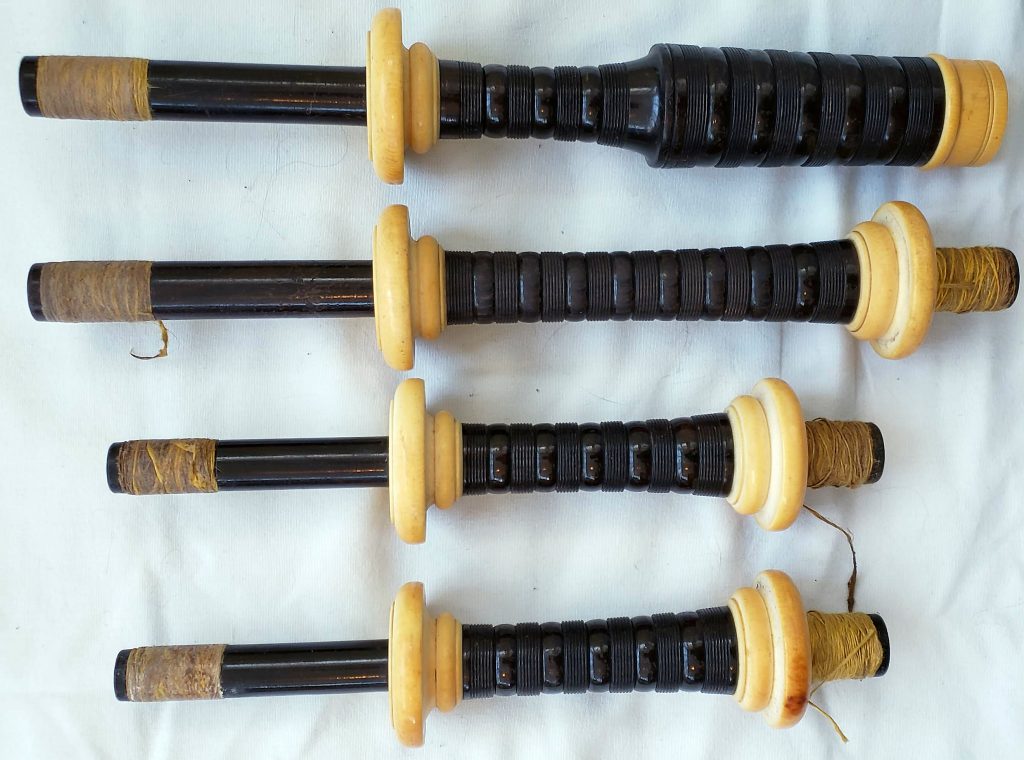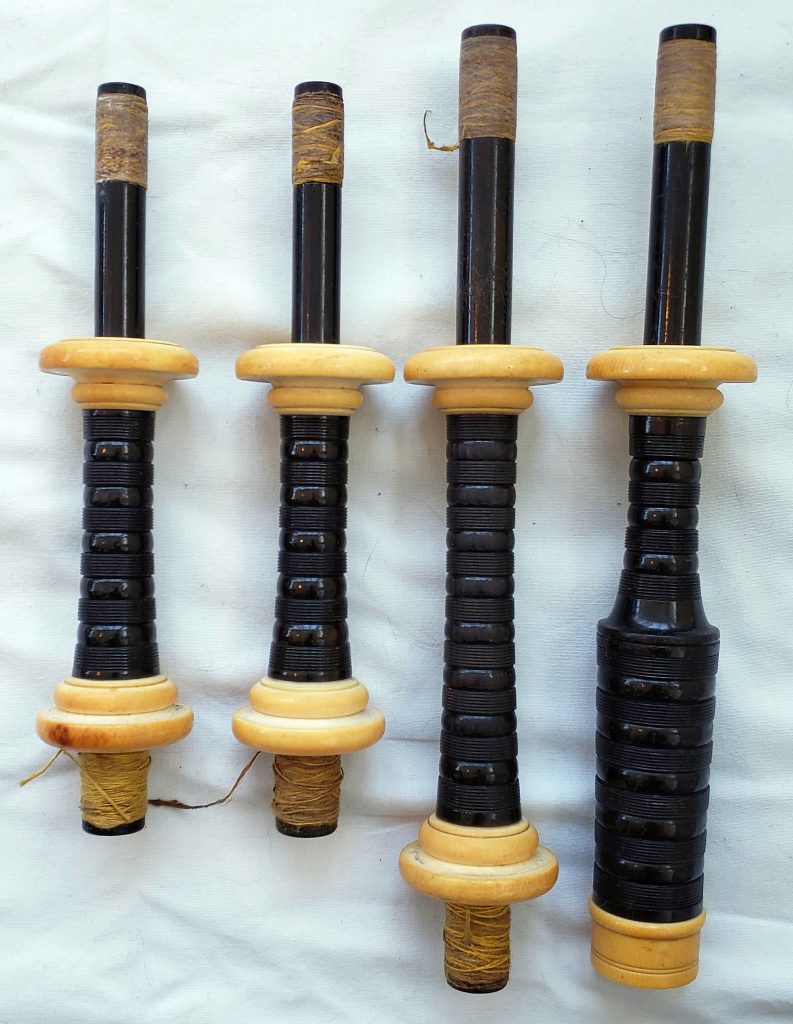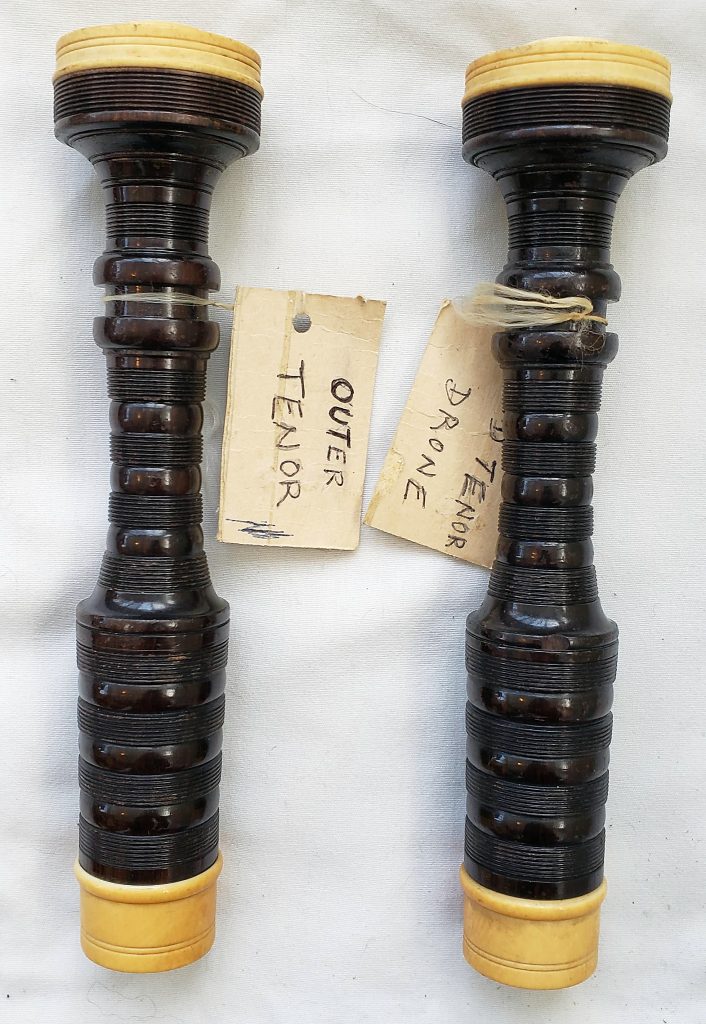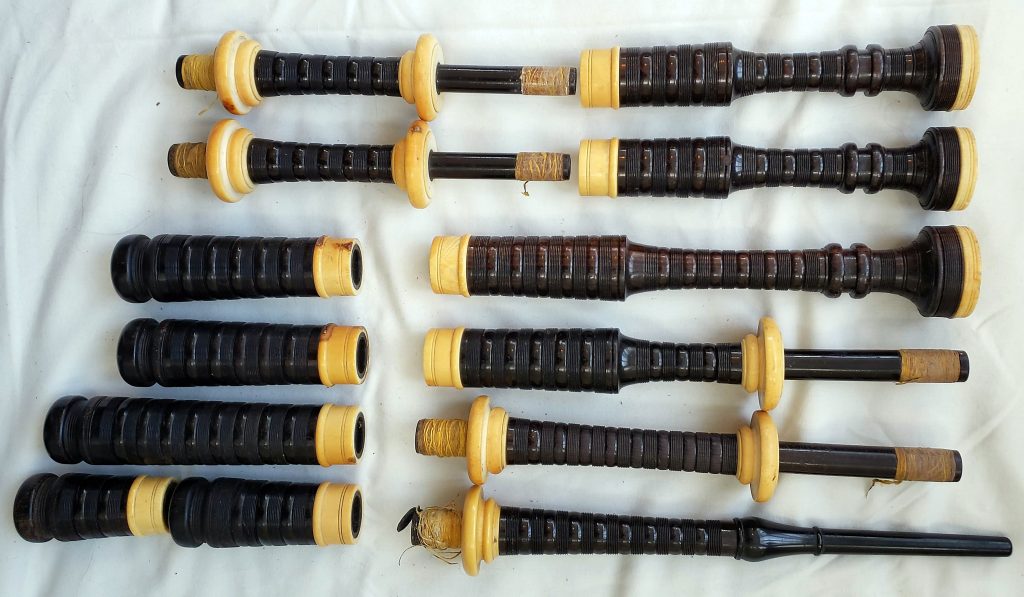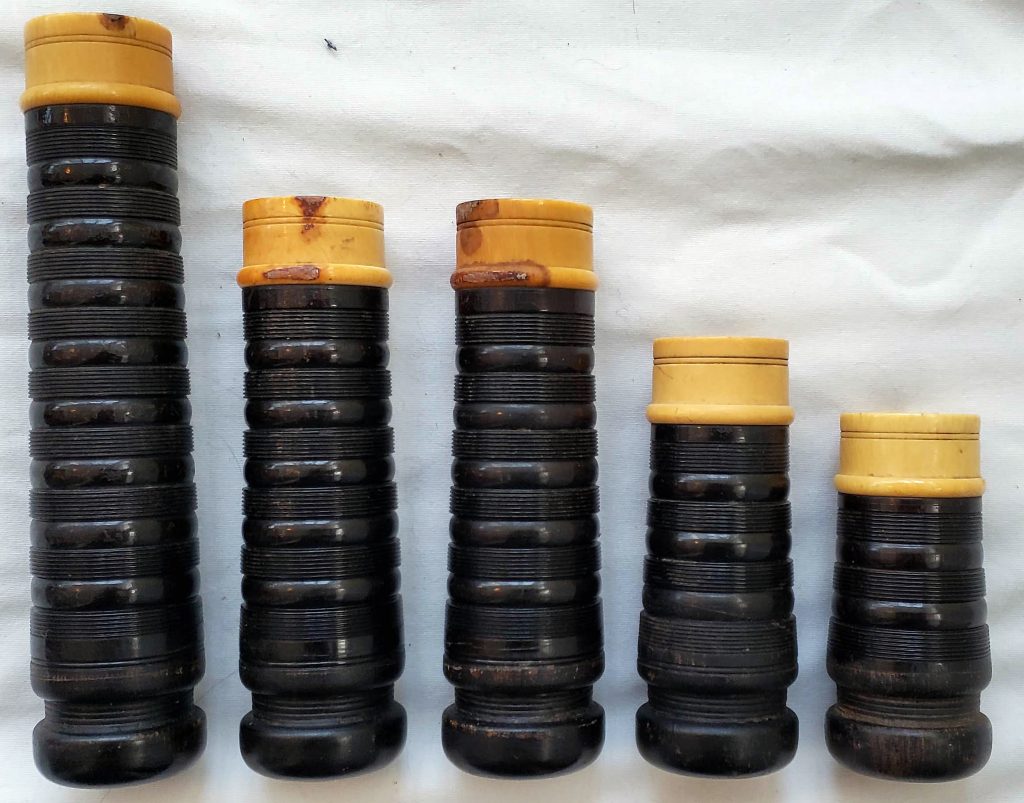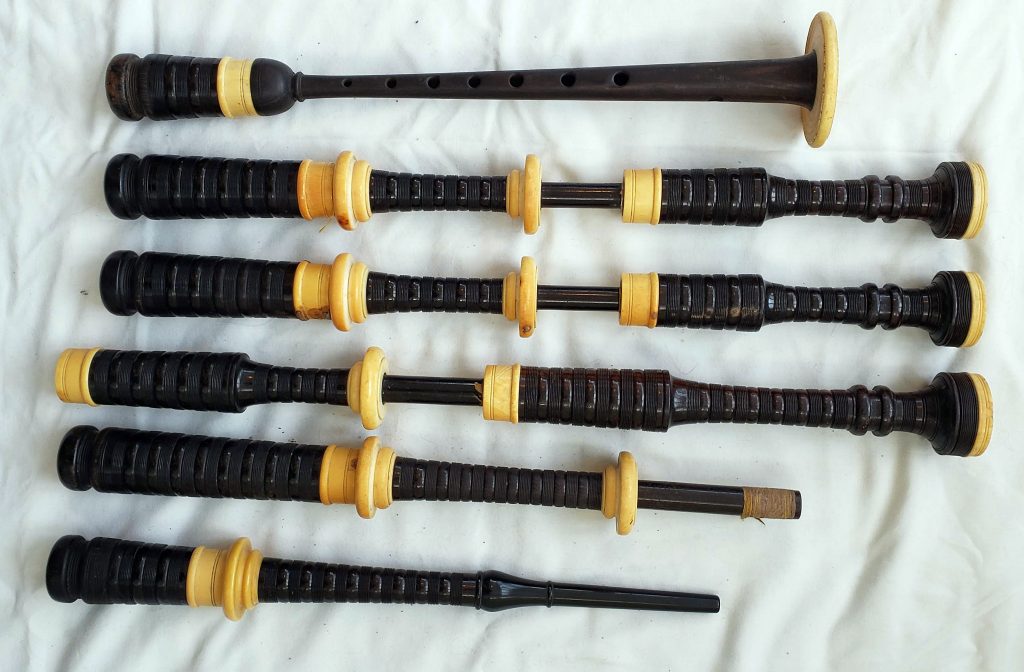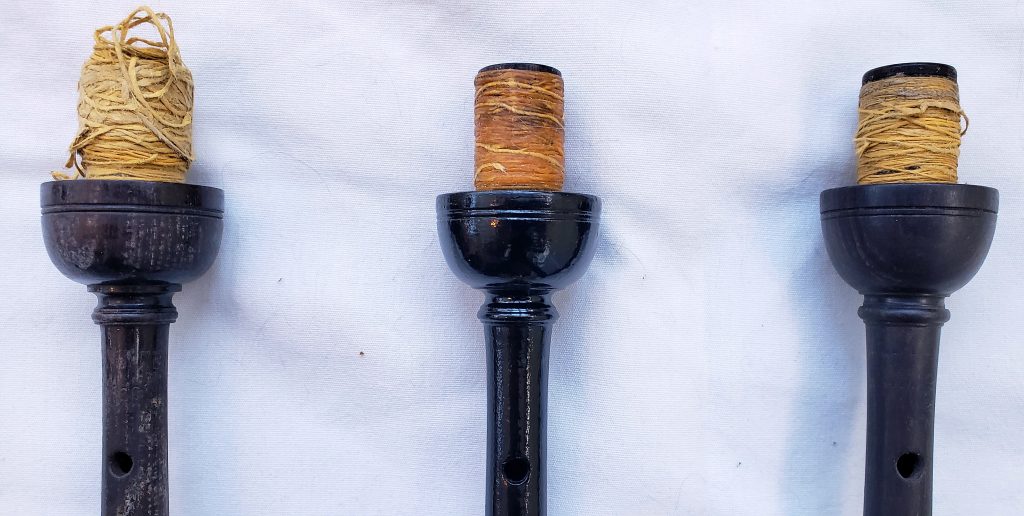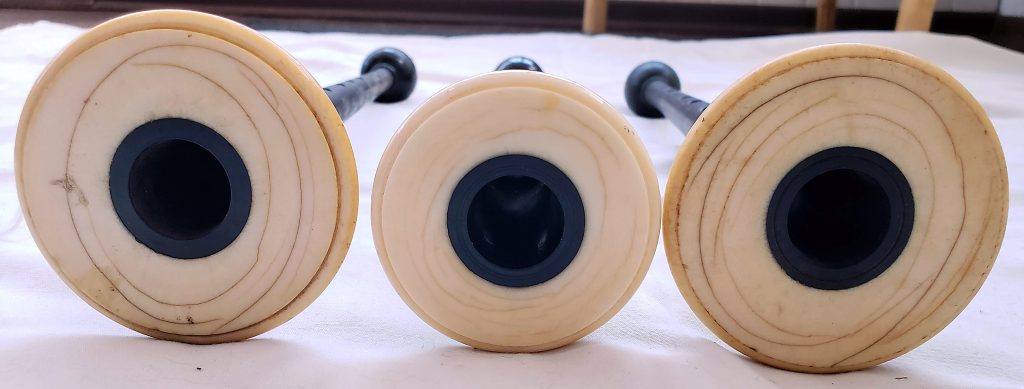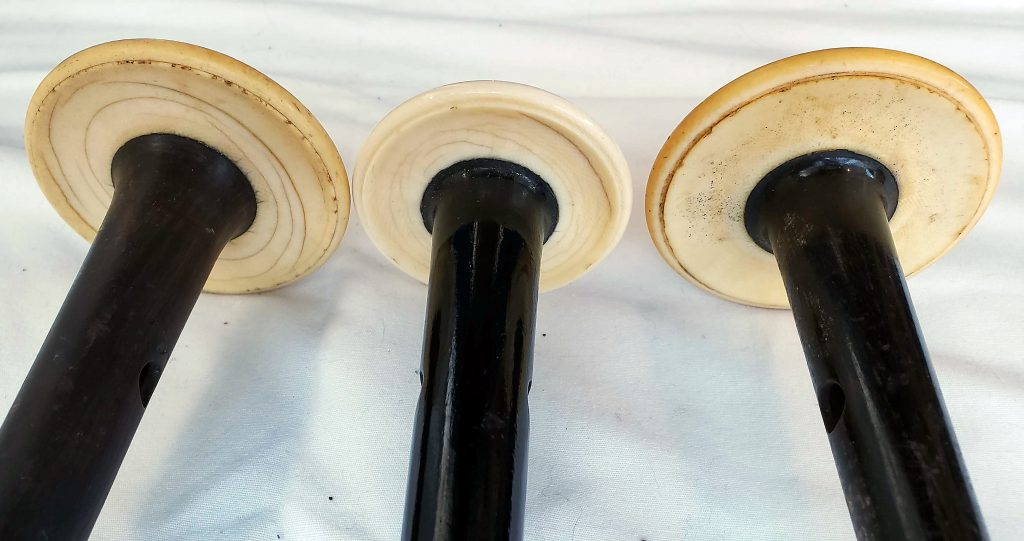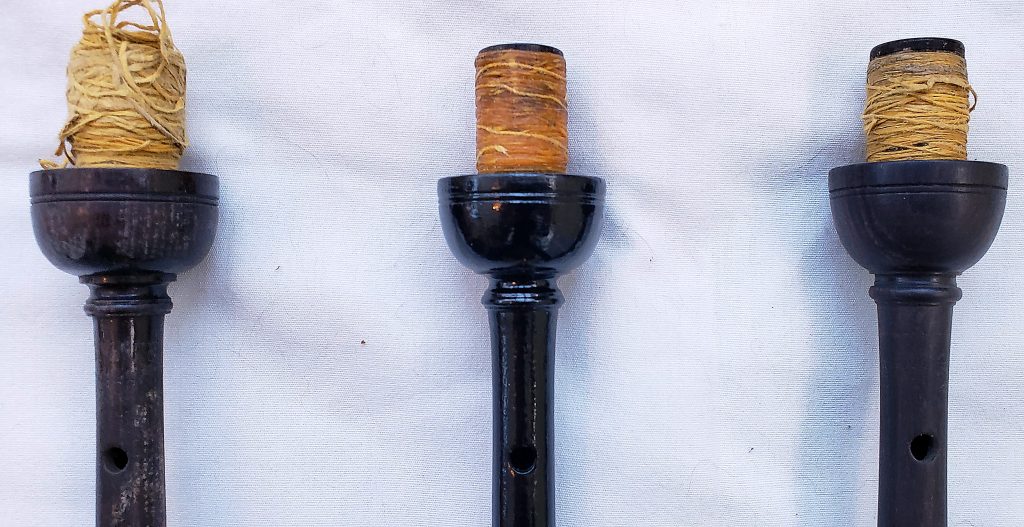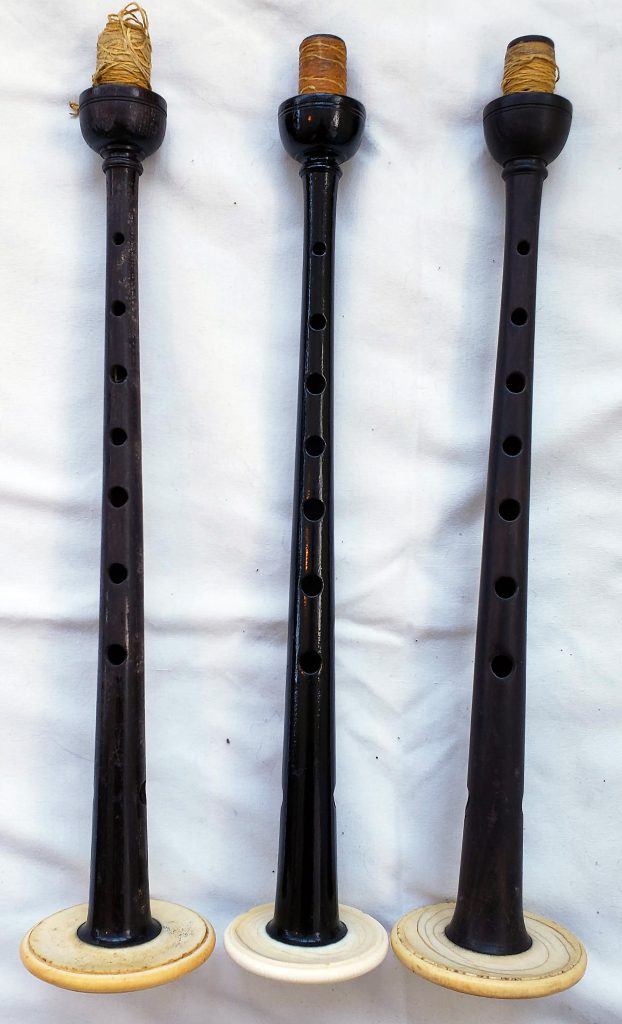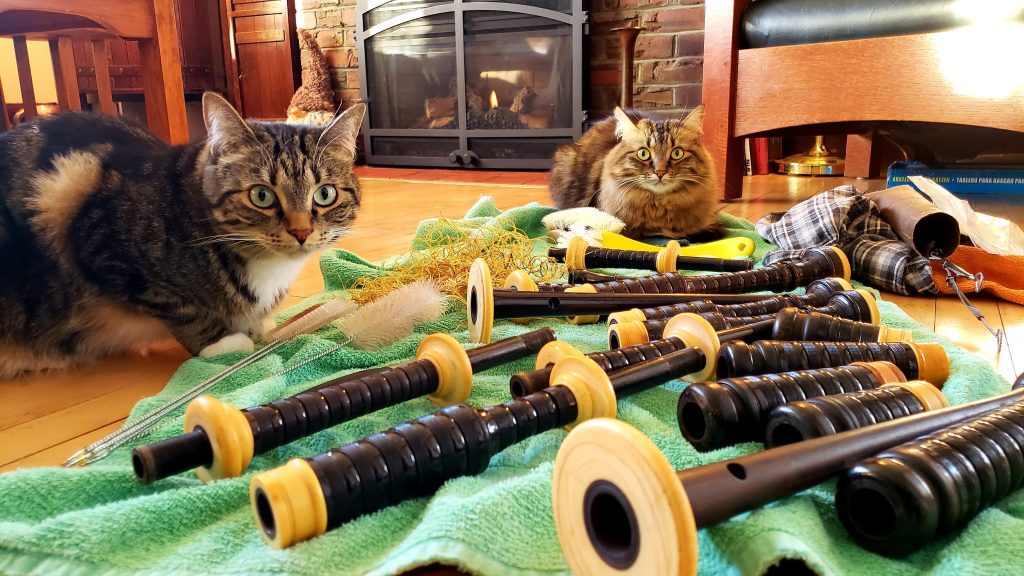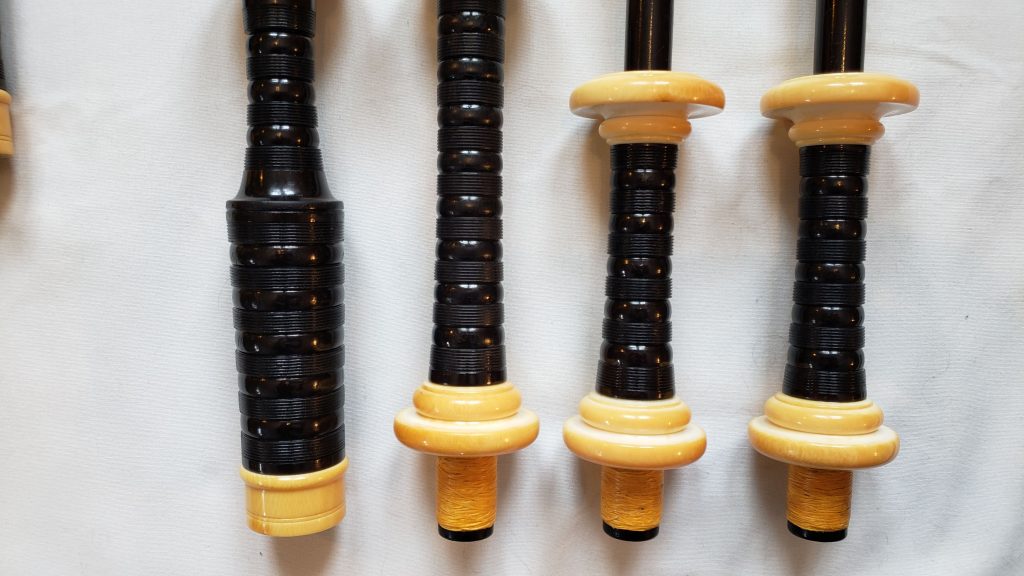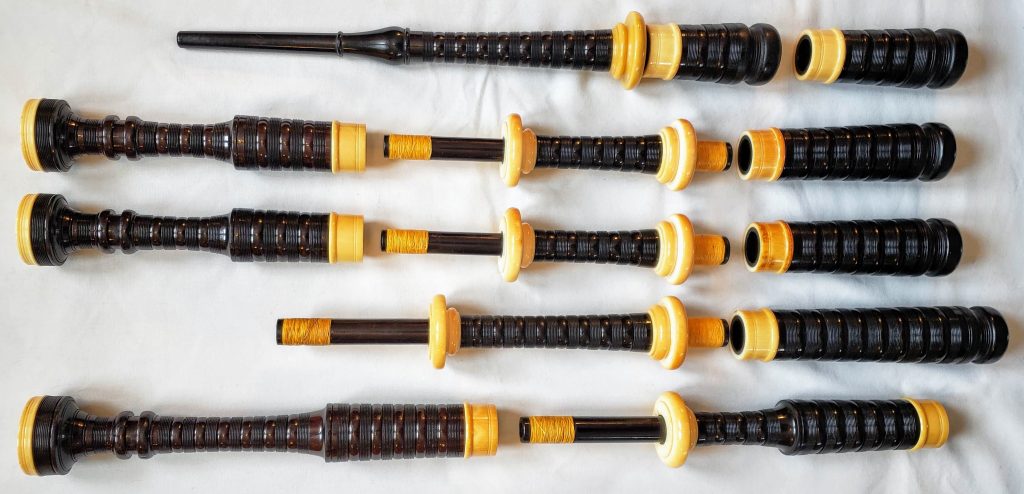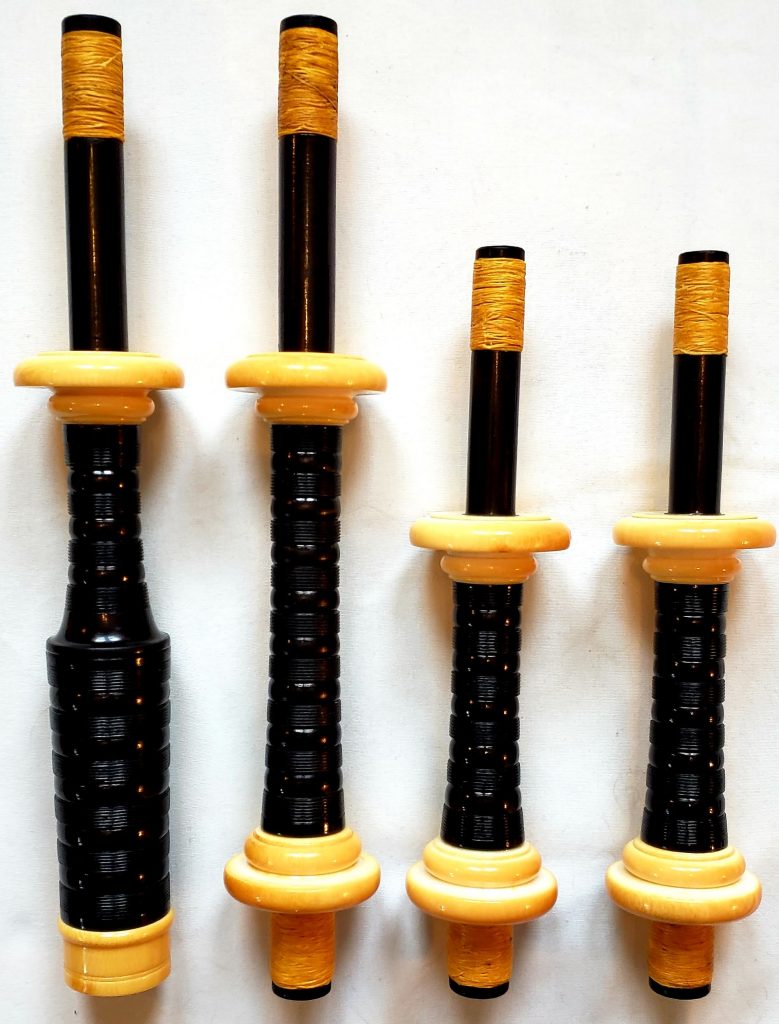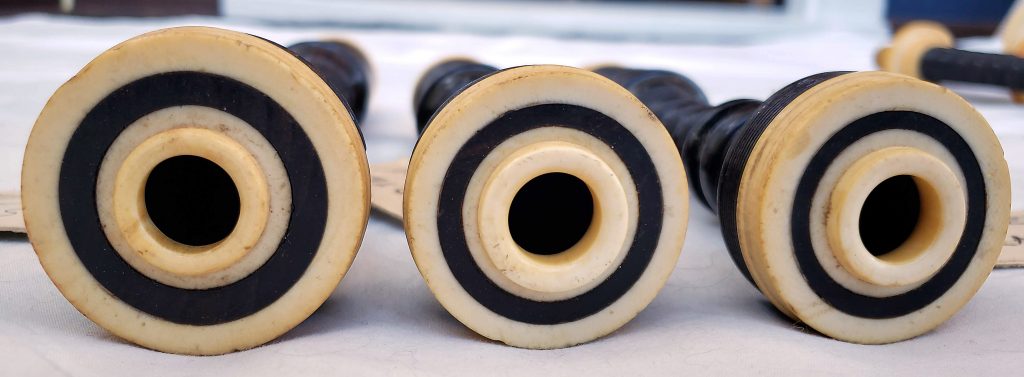
It seems to happen every two or three years, another set of pipes have found their way into the stable. This vintage set of ivory and very likely African blackwood pipes were tied into an old leather pipe bag. The stocks appear to be original and while the blowpipe is probably not original (a friend has a similar set with the same blowpipe!), it is vintage. Included in the leather pipe case were vintage Henderson (very worn and possibly cocus wood) and a vintage Hardie blackwood chanter. There were tied into a very smelly old leather pipe bag. But before we get too far into the story, here’s what the near pristine set look like after cleaning, buffing, oiling, and waxing…
As with most vintage bagpipes, this set is unmarked. How did we come the conclusion that these are 1930s to early 1940s R.G. Lawries? There are a number of identifying features:
- PROFILE: First, the overall profile is key for Lawrie pipes. Lawries are quite similar in shape to Peter Henderson and R.G. Hardie sets. However, subtle differences in the shape of the stocks right to the bells and bushes are key, and this holds true for Lawries from 1900 until 1970, to varying degrees.
- FOUNTAIN SHAPE: Lawries have pretty much always had a shallow angled fountain compared to most makers. The fountain is the swooping portion above the cord guide to the edge of the lower tenor at its greatest width. In Lawries is comparatively linear, less swooping. Here again, this is a very strong Lawrie feature that, coupled with other clues point us to Lawrie.
- PROJECTING MOUNTS: Lawrie projecting mounts evolved over the years but maintain a fairly classic bagpipe shape. With respect to dating, according to Ron Bowen, sometime in the mid-1930s the lower bead on the lowest projecting mounts began inflate. The upper bead also increased in size but not as much. It’s not clear when the beads return to smaller proportions, but by my eye there seems to be variability through the 1950s into perhaps the 1960s. The massive lower bead on the lower mounts of my set is tell-tale mark to help date these. So, sometime in the 1930s to the 1940s. As a point of comparison, a friend my mine has a set similar to mine but with catalin bushes. Catalin was apparently common from the 1950s into the 1970s. Her mounts are somewhat more bulky than mine and while the lower bead is inflated, it’s somewhat smaller than mine.
- BEADING AND COMBING: A really strong Lawrie trait is the use of double scribe lines from the stocks all the way to the drone tops. A good proportion of Lawries from 1900 on have them, often with two beads on the neck instead of the usual three. My set does not have the usual number of scribe lines, except on the stocks, which appear to match perfectly. Gordon MacDonald over at Island Bagpipe notes that the three and three combing and beading on the tenor tops was a pre-war attribute on Lawries. If you head over to Ringo’s 1900 to 1910 Lawries page you’ll see many sets of with the three over three beads. As Ringo notes, this was just the beginning of the time when bagpipe makers were going through turmoil with turners leaving for the war. A cottage industry of turners may have provided sets for Lawrie and others. As noted, the two sets of three beads on the tenor tops seem to be evident on earlier Lawries and perhaps these are late 30s. I will say that the workmanship is outstanding. Everything lines up very nicely and matches (though the blowpipe is not original to the set). Someone took their time when they were turning this set. However, with the large beaded mounts pushes it into the 30s and early 40s.
- FERRULES: Lawrie ferrules are generally quite similar to Henderson and Hardie ferrules. This style of shorter-looking ferrules are common on later Lawries (as with Hendersons and Hardie). I suppose this is just a sign of the times with changing tastes. While the ferrules appear a little shorter than earlier sets the look is somewhat an optical illusion. The thicker mount and bead makes the ferrule look shorter. These ferrules are actually similar in size to some of those my teens Hendersons. However, generally-speaking, these are shorter ferrules, helping to the push the date into the 30s and 40s.
- AFRICAN BLACKWOOD: Lawries right into the 1920s were often made of ebony or cocus (though I’ve seen way more cocus wood Hendersons from this period than in Lawries; early Lawries seem to me made from ebony more than cocuswood). In any event, that these pipes are made from African blackwood suggests, in concert with the above noted attributes, that they were turned in the 30s or 40s.
Here are some images as the pipes came to me, quite ripe with old leather bag and rancid bag preservative…
Here are a few images of the cleaned up and oiled pipes. Some of the worst stains on the ivory were removed by toothpaste and gentle polishing. The ghost image of the stains remain but at least the scabby-looking dark brown portions are gone…
